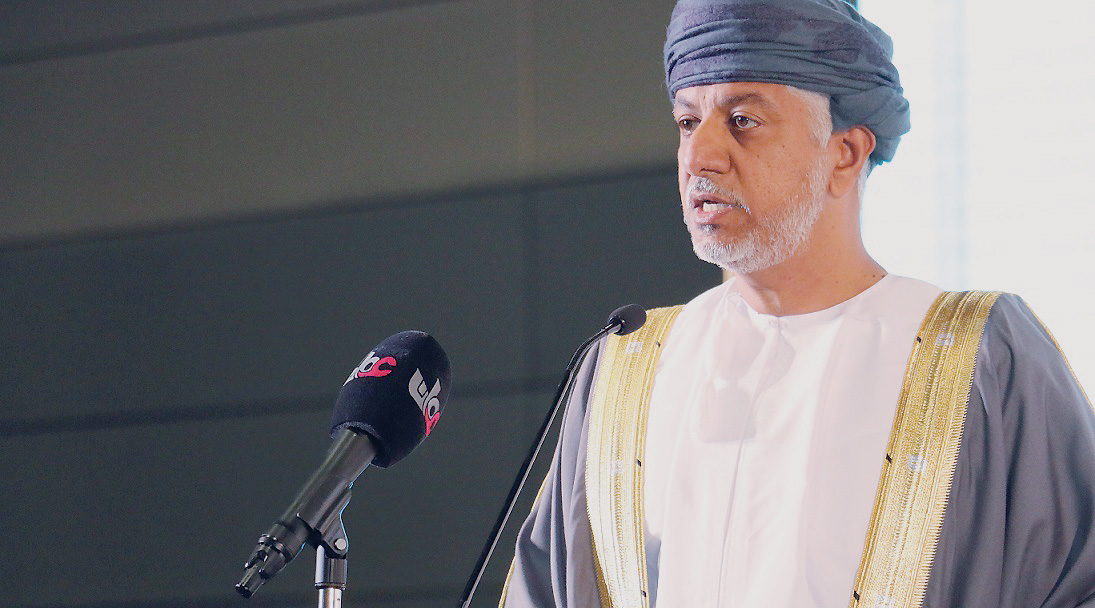

MUSCAT, APRIL 29 - Omnivest Chairman Shaikh Khalid Muhammad al Zubair, during his speech at the Oman Economic Forum said: “In sharp contrast to the economic contraction in 2015 and 2016, Oman’s economy is expected to grow at 3 per cent in 2018, as major recovery in oil prices take hold and the government’s fiscal reforms and efforts for economic diversification begin to bear fruit.” He added, “In view of these positive developments, Omani government has announced an expansionary budget for 2018 — spending is planned to grow by 7 per cent, as the government intends to push ahead with spending on crucial development projects and key social programmes.”
Oman ran large twin deficits in 2015 and 2016. For instance, the budget deficit widened to RO 5.3bn (22 per cent of GDP) in 2016, which has come down to RO 3.5bn (13 per cent of GDP) in 2017 and budgeted to decline further to RO 3.0bn (10 per cent of GDP) in 2018. The budget deficit is likely to shrink materially over the next 3 years. He continued, “Similarly, the current account deficit stood at 18.8 per cent in 2016. As the value of our oil exports surge again, the Current Account Deficit will likely reduce to just 3-4 per cent of GDP by the end of 2018. Oman’s 2018 budget is based on an average oil price of $50/barrel — the good news is that so far this year Omani oil has averaged at $65/barrel — 25 per cent above the 2017 average of $52/barrel.”
If oil prices stabilise around current levels, it will have a major positive impact on Oman’s key economic indicators and the future outlook.
The budget deficit will narrow to low single digits (between 3-4 per cent of GDP) or perhaps totally disappear if Omani oil averages around $70/barrel, which is Oman’s fiscal breakeven point.
Also, the policy initiatives by Central Bank of Oman (CBO) are boosting the banking system and the private sector.
In a recent announcement, Central Bank of Oman relaxed capital adequacy and liquidity requirements for the banking sector. The CBO lowered the required capital adequacy ratio by 1 point — from 13.9 per cent to 12.9 per cent. And, without the capital buffers, the new minimum CAR falls from 12 per cent to 11 per cent.
The Ominvest Chairman added, “It is estimated that this relaxation will create room for additional RO 2.6 billion in lending, which is around 11 per cent of the sector’s loans. If the limits are effectively utilised, it will be a major liquidity boost.
In addition, the CBO has allowed the banks to include net interbank borrowings in their deposit base, thereby, giving the banks more room to expand their loan books. The CBO has also allowed the banks to run bigger mismatches in their assets and liabilities. With these relaxations, banks will be able to manage their liquidity with much greater flexibility.
The good news is — Omani banks are well capitalised, with the capital adequacy ratios of the larger banks well above the CBO’s minimum thresholds. For instance, Bank Muscat’s CAR is 18.6 per cent, NBO’s at 17.3 per cent, BankDhofar’s 15.4 per cent and Bank Sohar’s 16.2 per cent.”
In addition, the banks’ Lending Ratios (or the LTD Ratios as they are famously called) are also well below the ceilings defined by the CBO. So, there is ample room to grow the loan volumes.”
“We believe that CBO’s recent measures will serve as an additional catalyst, boost credit growth, enhance liquidity flows and help the private sector to more aggressively borrow and invest to create jobs,” the Chairman added.
Oman Observer is now on the WhatsApp channel. Click here



